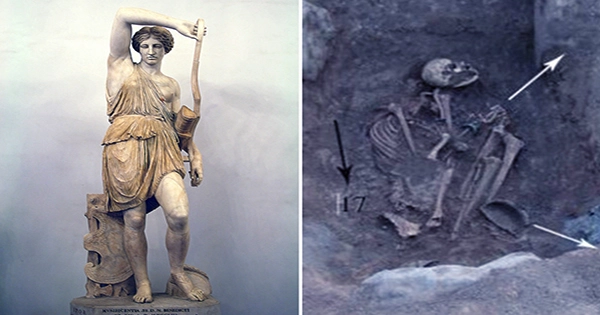Society disintegrated across the Mediterranean and Near East more than three millennia ago. Previously powerful empires and civilizations brought to their knees, entire languages vanished, and pastoral and nomadic populations replaced by imposing and walled citadels ruled paranoid elite. Life was harsh and violent. People were compelled to take up arms in order to protect themselves and their families. While we are used to seeing men saddle up and fight, a new study published in the International Journal of Osteoarchaeology has discovered the bones of two female warriors – horse-riding women who fought for their people using bows and arrows.
“Previously, it was widely assumed that injuries on male skeletons were caused by military combat, whereas those on female bones were caused by raids or domestic violence,” lead author Anahit Khudaverdyan told IFLScience. However, in recent years, prejudice has been gradually eroding. Skeletons that had long considered male – after all, why would a person buried like a revered warrior? – have been definitively shown to be female, prompting archaeologists to reconsider the concept that ancient trauma was completely separated.
Khudaverdyan remarked, “The role of a victim or aggressor is culturally specific.” “Biological sex isn’t usually the determining factor.” The people buried in the Jrapi cemetery in Armenia — the third site in the country to uncover the bones of ancient female warriors – had suffered severe bodily damage before dying. The first, a 45- to 50-year-old woman, had beaten across the back of the head with a mace or a sling at some time, resulting in a significant dent in her skull. Her arrow, which killed her, discovered still stuck within her ribcage, indicating that she perished in battle.
The second woman was significantly younger, barely out of adolescence. However, she had experienced even more extreme brutality in her brief life: she had shot in the ankle and slashed in the jaw from below with a dagger — injuries that the authors believe hint at a possible involvement as a cavalry trooper.
Her skull had also been caved in by a mace, leaving an injury “similar” to the older woman’s but “larger,” according to the paper, and while it wasn’t a fatal blow, the girl “might have had disabilities acquired from serious hits… [for example] motor, cognitive, and psychological impairment,” the authors write.
The report states that both were “highly trained, muscular, and probably engaged in archery-related rigorous physical activity on a regular [basis].” Khudaverdyan told IFLScience that they buried with bowls and jars, as well as arrows, daggers, and beautiful beads — the burial ceremonies of “professional fighters.” The country has a rich and proud traditional mythology of women warriors, according to the authors: they are “documented not only by anthropological data but also by archeological and historical evidence,” and “women riders depicted on vases and bronze belts could be fully compliant with the perceptions of the population in Armenia,” the paper explains.
The writers state, “Not only did ordinary Armenian women defend their homeland with arms… but aristocratic Armenian queens and princesses inspired generations with their valor, boldness, and feats of arms.” “In the 12th century, valiant defender Aytsemnik made a lasting impression on the Armenian medieval city Ani… She repelled the attacks of the Seljuk army led by emir Patlun with bravery. Sose Mayrig, a member of the Armenian national liberation struggle and the wife of Aghbiur Serob, a notable hajdk leader and hero from Sasun, fought alongside her husband against the Turks and Kurds.”
Unlike proof of women or non-binary soldiers, Khudaverdyan told IFLScience that the discovery “cannot be problematic.” According to the paper, the assumption that women are unsuitable for combat stems primarily from nineteenth-century stereotypes, but “the study of human remains themselves frees the researcher from difficulties of historical bias,” as Khudaverdyan put it. “When the researcher consults the skeleton, information about humans’ lived experiences that would otherwise be invisible because it didn’t make it into written records rises to the surface,” she added. “The skeleton gives some of the most direct evidence of past living experiences in this regard.”















